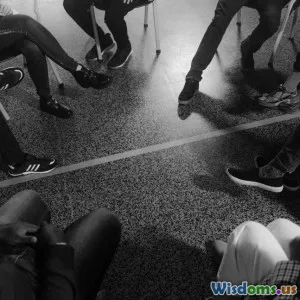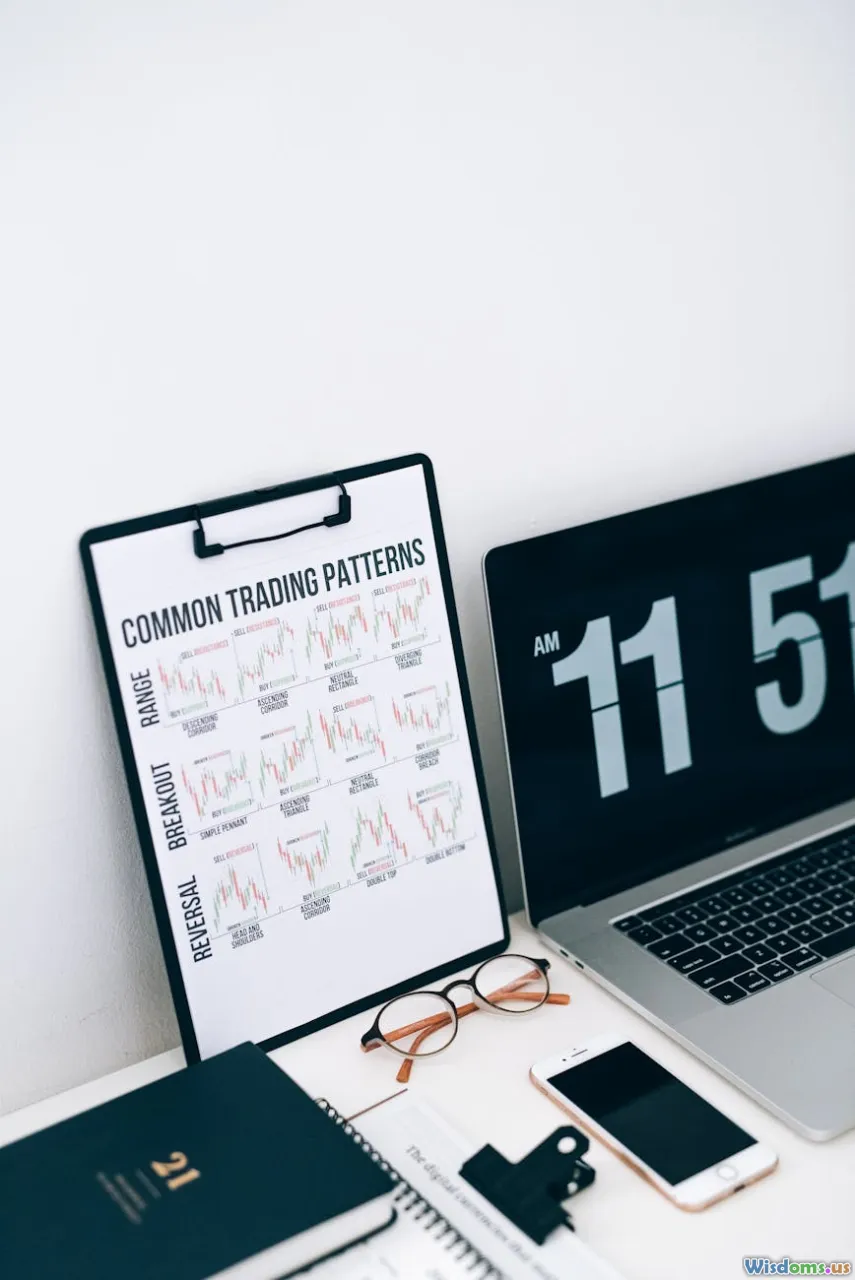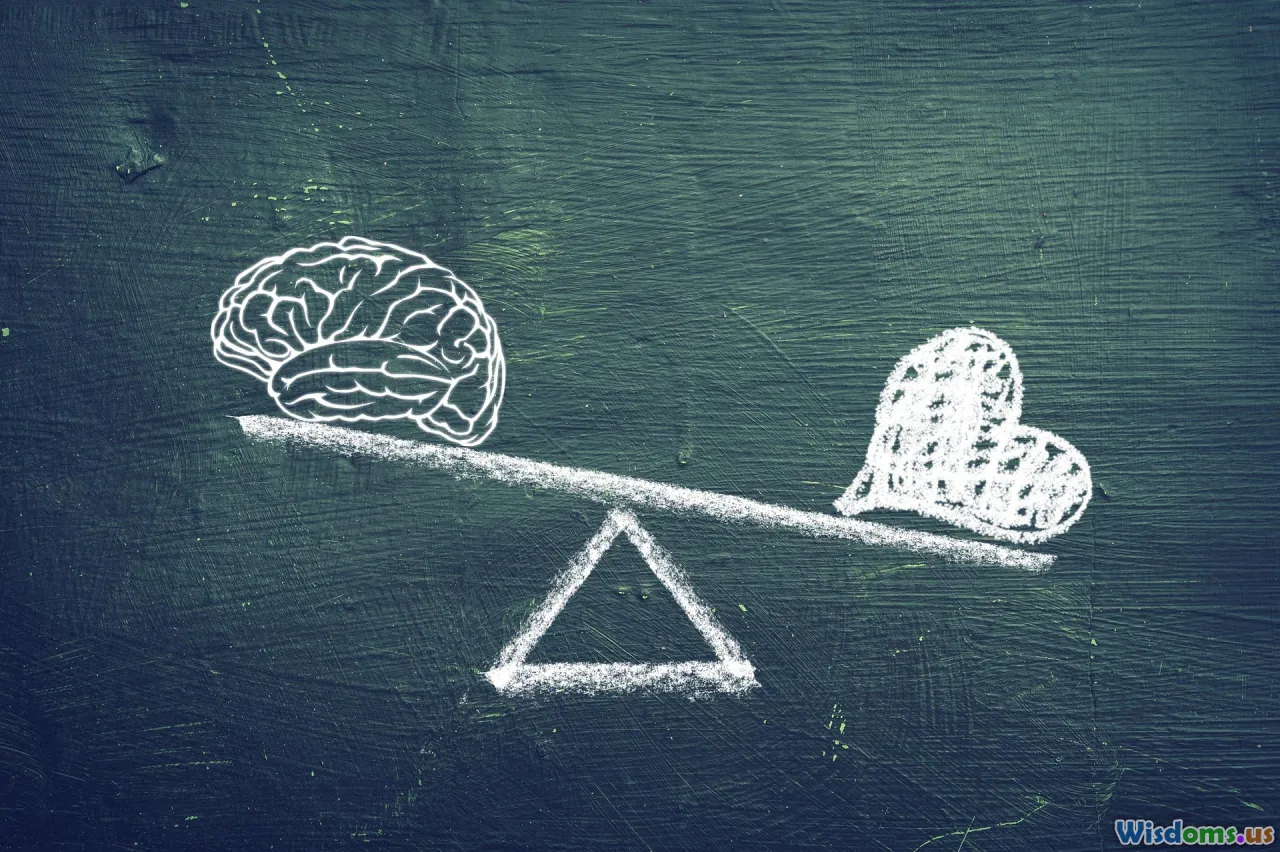
Do Probability Paradoxes Reveal Flaws In Human Intuition
15 min read An exploration of how probability paradoxes challenge and reveal limitations in human intuition. (0 Reviews)
Do Probability Paradoxes Reveal Flaws In Human Intuition?
What if much of what you believe about chance and uncertainty is quietly leading you astray? Probability paradoxes—those mind-bending puzzles that tie statistical reasoning in knots—have captured imaginations for decades. Yet behind the intrigue, they reveal an uncomfortable truth: our human intuition about probability is often deeply flawed. Understanding why this happens not only demystifies paradoxes but also sharpens decision-making in daily life, finance, science, and beyond.
The Nature of Probability Paradoxes

Probability paradoxes are more than just clever riddles. They challenge basic intuitions about randomness, chance, and statistical outcomes. Classic examples like the Monty Hall Problem, the Birthday Paradox, and Simpson's Paradox often produce results that seem contradictory or counterintuitive, even to experts. This creates an ideal setting for exploring the boundaries—and limitations—of human intuition.
Why do these paradoxes exist?
At their core, probability paradoxes arise when real-life scenarios violate the simplistic assumptions our brains naturally impose on randomness. Human cognition is shaped by evolutionary pressures that favored fast, approximate judgments (known as heuristics) over precise mathematical reasoning. As a result, we frequently rely on pattern recognition and analogies from past experiences, which break down when faced with abstract, complex probabilities.
Let’s dig into the mechanics of a few famous paradoxes.
The Monty Hall Problem: How Choice Can Deceive

Among probability puzzles, the Monty Hall Problem has become legendary for its ability to stump even mathematicians. The setup is modeled after the television game show Let's Make a Deal: You're presented with three doors. Behind one sits a car; behind the others, goats. After you pick a door (say, Door 1), the host (Monty) opens a different door (say, Door 3) to reveal a goat, then asks if you want to switch to the remaining unopened door (Door 2).
Why Intuition Falters
Most people instinctively believe that, with two unopened doors, the chances are now 50–50. However, probability theory shows that switching gives you a 2/3 chance of winning, while staying leaves you with just a 1/3 chance. The gap between these probabilities and the "gut feeling" reaction reveals a flaw in our intuitive reasoning: we subconsciously assume independence, ignoring the information Monty's choice conveys about the initial setup.
Key Takeaway
The Monty Hall Problem highlights how easily our intuition misreads conditional probabilities—events that depend on previous outcomes. The confusion isn't just an academic quibble; it reflects the broader human struggle to update beliefs with new information, a skill essential for sound judgment.
The Birthday Paradox: Probability in Populations

Another popular paradox leaves people astonished: In a group of just 23 people, there's a greater than 50% chance that two share the same birthday. It seems impossible at first blush—there are 365 days in a year, after all—but the math bears it out.
What’s Behind the Surprise?
The answer lies in how possibilities explode as the group grows. Rather than considering how a single person might match a specific birthday, we must account for all possible pairings among the group—which adds up to 253 unique pairs in just 23 people.
Intuitively, people underestimate the sheer number of interactions (or pairwise comparisons) that emerge as groups scale. Cognitive psychologists call this an error in combinatorial reasoning: our minds aren’t naturally wired to handle such exponential growth, so we default to linear estimates that miss the real complexity.
The Broader Implication
The misinterpretation exposed by the Birthday Paradox is common in social and scientific contexts—think about how likely it is for two people in a large network to know the same person, or how rapidly risk accumulates in interconnected systems. Recognizing these hidden probabilities is crucial for accurate risk assessment.
Simpson’s Paradox: When the Whole Counters Its Parts

Unlike other paradoxes that hinge on pure chance, Simpson’s Paradox arises from the way data is grouped and interpreted. It occurs when a trend apparent in several separate groups of data disappears or reverses when those groups are combined.
A Real-World Example
One famous real-life case comes from UC Berkeley’s graduate admissions in the 1970s. Data initially showed that men had a higher admission rate than women, leading to accusations of bias. But a closer look at individual departments revealed no such discrimination; in fact, women applied to departments with lower overall acceptance rates, while men applied to departments that accepted more students.
This paradox exposes a classic data interpretation trap: ignoring potential "lurking variables" (like department choice) can turn group data on its head. Human intuition tends to focus on surface stories rather than digging for these nested structures. Similar patterns have been uncovered in medical studies, legal cases, and performance statistics across industries.
Learning the Lesson
Simpson’s Paradox is a warning against oversimplification. When drawing conclusions from statistics, it’s vital to consider how data is aggregated and whether important information is masked in summary figures. Critical and analytical thinking—not gut reaction—best handle such challenges.
Cognitive Shortcuts: Heuristics and Their Hazards

Why are humans so consistently fooled by probability paradoxes? The answer lies in heuristics—mental shortcuts that allow us to make fast but sometimes inaccurate judgments.
Familiar Heuristics at Work
- The representativeness heuristic compels us to judge probabilities based on similarity to stereotypes rather than statistical reality. For example, people often think a sequence like HTHTHT is more random than HHHHHH in a coin toss, though both are equally probable.
- The availability heuristic makes memorable or recent events seem more likely. If you just watched news reports about plane crashes, you may overestimate the risk of flying, despite what data says.
- Misleading anchors. Initial information disproportionately influences our estimates ("anchoring"), which can bias us when evaluating uncertain scenarios.
These shortcuts work well for quick survival decisions, but break down in the abstract logic underpinning probability theory. Studies by psychologists Daniel Kahneman and Amos Tversky documented how such biases systematically distort probability judgments, earning Kahneman a Nobel Prize in Economics.
Bridging the Gap Between Gut and Logic
While intuition can sometimes steer us right in familiar contexts, high-stakes decisions benefit from slow, deliberate thought and mathematical reasoning—a lesson echoed across domains from investing to medicine.
Real-World Impacts of Probability Paradox Blind Spots

Flawed probabilistic thinking can have profound consequences:
- Finance: Investors misjudge risks, fall for the gambler’s fallacy, or mistake random market swings for meaningful trends, leading to costly mistakes.
- Product safety: Misinterpretation of conditional probabilities influences decisions about medical testing, leading some to overestimate the threat posed by false positives or negatives.
- Criminal justice: Jurors may miscalculate the likelihood of DNA matches or the true significance of statistical evidence, sometimes resulting in wrongful convictions.
- Sports strategy: Coaches and commentators frequently draw simplistic conclusions from small numbers of games or plays, misunderstanding the true odds of repeat performance.
Raising awareness about these traps doesn’t just help individuals—it also informs policy and public discourse, promoting wiser, more transparent decisions.
Can Education Correct Probabilistic Intuition?

If our instincts mislead us, can we train better intuition? Research suggests yes—but with caveats. Traditional classroom mathematics often fails to rewire common biases because students memorize formulas without grappling with real surprise or contradiction.
Effective Interventions
- Visual learning: Interactive simulations (e.g., applets for the Monty Hall Problem) let users repeatedly test outcomes, bridging the gap between theory and experience.
- Frequent feedback: Gamified quizzes and activities make it easier to receive instant correction, which supports learning from mistakes.
- Narrative context: Presenting probability problems as stories rather than abstract puzzles improves understanding and memory, according to educational psychologists.
It remains exceptionally difficult, however, to fully erase ingrained biases. Even experienced statisticians and poker professionals may lapse into intuitive errors under stress!
Probability Paradoxes In Everyday Decision-Making

It’s tempting to relegate probability paradoxes to classrooms or game shows, but their lessons are immediate and universal. Consider some real-life scenarios:
- Buying insurance: Understanding conditional probabilities is vital for weighing premiums versus real risk of disaster.
- Health monitoring: Accurate risk assessment (as in interpreting test results or drug side-effects) relies on conditional and base-rate probabilities, which are commonly misjudged.
- Online security: The likelihood of sharing a password may seem random, but small user groups with overlapping choices can reveal vulnerabilities—akin to the Birthday Paradox in action.
Adding a skeptical, analytical mindset to daily choices requires acknowledging how frequent and misleading probability intuitions can be.
Embracing Uncertainty: How to Outsmart Paradoxes

If probability paradoxes lay bare our cognitive blind spots, they also point a way forward. Here’s how to use their lessons to make better decisions:
1. Seek Out Counterexamples
Whenever a situation seems simple, ask: Can I see a comparable case that produces a surprising outcome? Probability paradoxes remind us that hidden information often lies below the surface.
2. Think in Terms of Distributions, Not Events
Shift from focusing on isolated possibilities to the full range of outcomes—what’s called “thinking statistically” instead of “thinking deterministically.”
3. Use Visual Tools
Graphs, decision trees, and simulations make abstract probabilities tangible and can quickly reveal where gut instincts fail.
4. Welcome the Strange
Far from undermining reasoning, the surprise invoked by paradoxes can become a powerful educational signal. Pursuing what feels off or illogical becomes the first step towards sharper, more accurate thinking.
5. Regularly Challenge Your Assumptions
Discussing paradoxes with others can expose unconscious biases. Encourage debate and embrace confusion as an opportunity for growth.
Probability paradoxes may seem like academic curiosities, but they are rich sources of insight—crucial warnings against overconfident intuition, and invitations to think more rigorously about the uncertainty pervading our world. By paying attention to these counterintuitive puzzles and the mistakes they so reliably tempt us to make, we grow wiser in the face of risk—ultimately, becoming smarter decision-makers at work, at home, and everywhere in between.
Rate the Post
User Reviews
Popular Posts

















